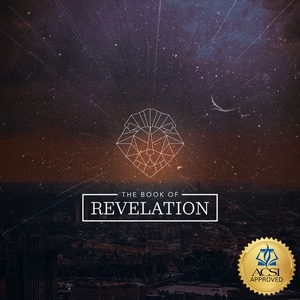In the letters to the churches of Revelation, it seems there are inconsistencies in the meanings of the "white garments" and being found "naked". Is it talking about salvation or unbelief?
What do the White Garments in Revelation Mean?
The Book of Revelation uses many rich symbols to convey spiritual truths. Two of these symbols, white garments and nakedness, appear in letters to the churches and carry profound significance. This exploration will clarify their meanings and how they relate to salvation, unbelief, and works.
Interpreting White Garments and Nakedness in Revelation
Among the letters to the seven churches in Revelation, the symbols of white garments and nakedness appear most prominently in chapters 3 and 16. However, their meanings are sometimes debated. Are these symbols referring to salvation, good works, or something else? To arrive at a clear interpretation, it’s vital to examine all related symbols as a cohesive whole rather than in isolation.
Wretched, Poor, Blind, and Naked - An Analysis of Laodicea
When Jesus describes the Laodicean church in Revelation 3, He uses five terms to describe their spiritual state: wretched, miserable, poor, blind, and naked. Together, these terms paint a picture of unbelief, not merely a lack of good works. Here's why:
- Wretched and miserable suggest an absence of spiritual vitality rooted in saving faith.
- Poor reflects spiritual bankruptcy, again pointing to a lack of genuine faith.
- Blind and naked further underscore their unsaved state, as blindness is symbolic of being without spiritual enlightenment, and nakedness refers to being uncovered by Christ's righteousness.
The Serious Warning to Laodicea
Jesus declares He will “vomit” the Laodicean church out of His mouth, signifying eternal rejection. This language is never used for disobedient believers, who, though they may lack good works, remain secure in their salvation. Scripture, including passages like 1 Corinthians 3:15 and Hebrews 6:8, emphasizes that believers’ eternal destiny is never in jeopardy due to insufficient works.
Thus, Jesus’ harsh condemnation of Laodicea signals their greater issue of unbelief, not a failure to produce good works.
Consistent Interpretation of White Garments
The symbol of white garments is consistently interpreted throughout Revelation. Pastor Armstrong’s teaching aligns these garments with the righteousness of Christ. Here’s a breakdown of how white garments and nakedness are used symbolically across Revelation:
White Garments in Different Churches
- Sardis (Revelation 3:4): A soiled garment symbolizes insufficient works, while those with clean garments have good works that reflect their faith.
- Laodicea (Revelation 3): Their lack of garments altogether reflects unbelief. Here, Jesus commands them to “obtain white garments” because they are spiritually uncovered and unsaved.
Linen as a Picture of Good Works
Revelation 19 gives further meaning to white garments, describing them as "fine linen, clean and bright." This fine linen represents the good works of believers. While all believers possess white garments as a sign of being saved, their degree of cleanliness reflects their works done in faith.
Nakedness as a Symbol of Unbelief
Nakedness is always a symbol of spiritual vulnerability and unbelief in Revelation. For example:
- Revelation 3 (Laodicea): Their nakedness symbolizes their need for salvation, as they are uncovered by Christ’s righteousness.
- Revelation 16:15: Jesus warns the unbelieving world to repent, so they will not be found “naked” when He returns.
White Garments as a Sign of Salvation
White garments are consistently linked to salvation throughout Revelation. To be clothed in white garments means to be covered in Christ’s righteousness. Those who are naked, however, remain spiritually exposed and unreconciled to God. Here are key references that support this interpretation:
- Revelation 3 (Sardis): The faithful in Sardis who have not "soiled their garments" will walk with Christ in white, symbolizing both salvation and their good works.
- Revelation 19: White linen, described as “clean and bright,” represents the righteous acts of the saints, showing that salvation manifests itself in works done through faith.
Thus, white garments are both a sign of salvation and a reflection of the believer's faithful witness.
Key Takeaways on White Garments and Nakedness
- White garments symbolize salvation and being clothed in Christ’s righteousness. All believers possess them, but their cleanliness reflects good works.
- Nakedness consistently represents unbelief and spiritual exposure. The white garment church refers to those who are covered by Christ’s righteousness and live in faith.
- Laodicea’s rebuke calls them to salvation, as they are spiritually unclothed and in need of Christ’s covering.
Reflect on this message
- Are you clothed in white garments? Examine your faith and ensure you are covered in Christ’s righteousness.
- Are your garments clean? Faithful living and good works glorify God and reflect a life aligned with His will.
- Don’t be found naked. Reject unbelief and respond to Jesus’ call to salvation with urgency and sincerity.
Prepare for Christ's Return
The symbols in Revelation are a sobering reminder that we must be spiritually prepared for Christ’s return. Whether through repentance or good works, take the time to ensure you are clothed with white garments, ready to stand confidently before the Lord.
"Behold, I am coming as a thief. Blessed is the one who stays awake and keeps his garments, lest he walk about naked and men see his shame" (Revelation 16:15).
Prepare yourself—for the day of the Lord approaches!
Scripture quotations taken from the (NASB®) New American Standard Bible®, Copyright © 1995, 2020 by The Lockman Foundation. Used by permission. All rights reserved. www.lockman.org







